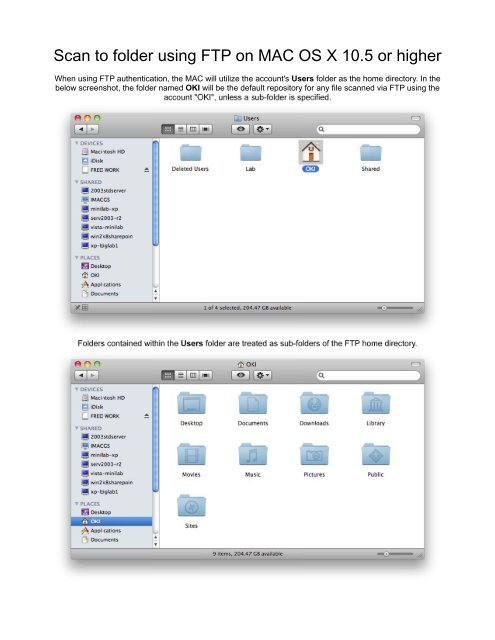How to clean macbook memory. Here’s how to clean your MacBook from the trash: Click and hold on the Trash can icon in the Dock. Click Empty and then Empty Trash. The process is quite simple, right?
OS X 10.5 has search technology, graphics, rapid connectivity and solid stability. IChat now lets to present movies, presentations and virtually any document during your chats with iChat Theater. You can even save your audio and video chats for sharing or synching with an iPod to play on the go. At first glance, there do not appear to be major differences between MacOS X 10.6 'Snow Leopard' and MacOS X 10.5 'Leopard'. Apple itself refers to it as more of a 'refinement' than an upgrade - and, accordingly, has priced it at US$29 for those upgrading from 'Leopard' - and some Windows users have dismissed it as little more than a 'service.
Pacifist is a shareware application that opens Mac OS X .pkg package files, .dmg disk images, and .zip, .tar, .tar.gz, .tar.bz2, and .xar archives and allows you to extract individual files and folders out of them. This is useful, for instance, if an application which is installed by the operating system becomes damaged and needs to be reinstalled without the hassle of reinstalling all of Mac OS X, or if you want to inspect a downloaded package to see what it will install before installing it. Pacifist is also able to verify existing installations and find missing or altered files*, and Pacifist can also examine the kernel extensions installed in your system to let you see what installer installed them, and whether the installer was made by Apple or a third-party.
Pacifist is compatible with Mac OS X 10.9 or higher, including Mac OS X 10.15 “Catalina”. Pacifist requires a 64-bit Intel™ processor.
- Download the latest version of Pacifist in zip or disk image format.
- Read the release notes for Pacifist here.
- For users using versions of Mac OS X older than 10.8, download older versions of Pacifist here.
- See some screenshots of Pacifist in action!
- Pacifist is $20 shareware - you can click here to register now via FastSpring.
Pacifist has been well-reviewed in Mac publications over the years:
*This product includes software developed by the University of California, Berkeley and its contributors.
Odds and Ends
- Note - the following applications are all pre-release software, and should be considered sneak previews. If you download these applications, you agree to do so at your own risk as they may be buggy. I am not responsible for any damage that occurs as a result of using these applications.
TimeTracker
TimeTracker is a quick-and-dirty application that displays the contents of your Time Machine backups, and shows what's changed since the previous backup. TimeTracker is in an extremely early state, and is as such very unpolished.

- Download TimeTracker (prerelease), which works with 64-bit Intel Macs running OS X 10.10.x (Yosemite) or greater.
NibUnlocker
One of the fun things about the Mac going all the way back to the original was the way it stored user interface data for applications inside a separate stream called the “resource fork”, in a format readable by a tool named ResEdit. This allowed users to poke around inside applications and learn how their UIs ticked, and it was also helpful to developers, who could look at Apple's interfaces for examples when trying to figure out how to do something UI-related. In Mac OS X, this tradition continued, with ResEdit replaced by a tool named Interface Builder, and the resource fork replaced by a file called the “nib file” (with NIB standing for NeXTSTeP Interface Builder). Nib files contained even more information than the classic resource forks, and were of great interest to tinkerers and developers.
Until now, that is. In the last few years, Apple has been moving away from using nib files directly in projects. Instead, they have been encouraging the use of flat XML-based “xib” files which are converted to nib files on compiling the application. Since xib files are essentially flat, UTF-8 encoded text files, as opposed to nibs, which were bundled folders, xib files are much more SCM-friendly than nib files were. Unfortunately, however, the nib files to which they compile are not editable by Interface Builder, since they lack the class information that IB needs, and only include the raw data necessary for the application to reconstitute the objects. What's more, in Xcode 4, it is no longer possible to create nib files containing the tiny “classes.nib” and “info.nib” files that could make the file editable while consuming a negligable amount of space. Instead, the only way to make an editable nib is to make a copy of the entire xib file, and name it 'designable.nib'. Since a xib is essentially a less-compact representation of a nib file, this more than doubles the size of the nib, and is far less efficient than the old system was. Saia-burgess controls driver. Consequently, editable nibs are becoming rarer and rarer in the wild.
Enter NibUnlocker. NibUnlocker is an application that attempts to parse a non-editable nib file and output a xib file that Interface Builder or Xcode can edit. The resulting xib files do not contain all the information that was in the original xib file used to create the nib, however, so the xib file created by NibUnlocker will not be a complete replacement for the original. Although they should not be used in a project to compile a new nib file, as doing so may have unpredictable results, xib files made by NibUnlocker can be very useful for examining a nib file and seeing how it is constructed.

- Download NibUnlocker (pre-release), which should work with Mac OS X 10.6 (“Snow Leopard”) and up, although it has received very little testing.
CocoaTADS
CocoaTADS is a port of the HTML TADS interpreter to Mac OS X. HTML TADS is a multimedia interactive-fiction platform, allowing you to play text adventure games (many of which can be found here), sort of like the Infocom games from the 1980s, except that HTML TADS allows not only text but also graphics, sound, and even animation. You can find more information about HTML TADS here. CocoaTADS is currently extremely pre-beta, and there are no guarantees on how well it will work on your machine.
- Download CocoaTADS 0.3.4, which should hopefully work on Mac OS X 10.5 and up, running on G4 or better hardware. Unfortunately, I have currently only tested it on 10.6.x Intel.
OS9Experience
OS9Experience is a stupid little app that recreates certain behaviors that users of the classic Mac OS (meaning versions prior to 10.0) should be familiar with. If you feel a little nostalgic for the old days, this app may be just the thing for you! This app can be a fun addition to an unsuspecting co-worker’s Login Items. Now updated to work properly on multi-monitor setups, and available as a Universal Binary.
- Download OS9Experience, which should hopefully work on Mac OS X 10.4 and up (and possibly earlier versions as well - this has not been extensively tested).
Horrible Coding Hacks
Note: The following applications are obsolete and should be considered unsupported.
Mac Os X 10.5.7

BootCD
Mac Os X 10.5.2
BootCD is a Cocoa app that creates a disk image that can be used to burn a Mac OS X boot CD with a working Finder and Dock on it. This utility is unfinished and still has some flaws, but works. The current version works much better than previous versions, and includes the ability to run Drive10 and other utilities, although Norton does not yet work from the CD.
Note: BootCD is unsupported, and is not compatible with Mac OS X 10.4 (Tiger) or later. Please do not e-mail me asking me about a release date for the next version, as no new versions are planned.
- Download the latest version of BootCD, version 0.6.4.1, which works with Mac OS X 10.3.x (Panther).
- Download BootCD version 0.5.4 for Mac OS X 10.2.0 through 10.2.8 (Jaguar).
- Download BootCD version 0.3 for Mac OS X 10.1.5 and earlier.
DockDisks
Click Here to download DockDisks 1.0b5.2, an unsupported hack that makes disks appear in your Dock when you insert them, allowing you to reduce clutter on your Desktop.
If you would like to contact me, send e-mail to
(sorry, a JavaScript-compliant browser is required to view my e-mail address)
Introduction
At the end of my Mac OS X 10.4 Tiger review, I wrote this.
Overall, Tiger is impressive. If this is what Apple can do with 18 months of development time instead of 12, I tremble to think what they could do with a full two years.
That was exactly two and a half years ago, to the day. It seems that I've gotten my wish and then some. Mac OS X 10.5 Leopard has gestated longer than any release of Mac OS X (other than 10.0, that is). If I had high expectations for 10.5 back in 2005, they've only grown as the months and years have passed. Apple's tantalizingly explicit withholding of information about Leopard just fanned the flames. My state of mind leading up to the release of Leopard probably matches that of a lot of Mac enthusiasts: this better be good.
Maybe the average Mac user just expects another incrementally improved version of Mac OS X. Eighteen months, two and a half years, who's counting? Maybe we enthusiasts are just getting greedy. After all, as Apple's been so fond of touting, therehavebeenfivereleases of Mac OS X in the time it's taken Microsoft to deliver Windows Vista.
AdvertisementMac Os X 10.8 Download Free

Mac Os X 10.5 Dmg
But far be it from me to use Microsoft to calibrate my expectations. Leopard has to be something special. And as I see it, operating system beauty is more than skin deep. While the casual Mac user will gauge Leopard's worth by reading about the marquee features or watching a guided tour movie at Apple's web site, those of us with an unhealthy obsession with operating systems will be trolling through the internals to see what's really changed.
These two views of Leopard, the interface and the internals, lead to two very different assessments. Somewhere in between lie the features themselves, judged not by the technology they're based on or the interface provided for them, but by what they can actually do for the user.
This review will cover all of those angles, in varying degrees of depth. Like all other Mac OS X releases before it, Leopard is too big for one review to cover everything. (After all, Tiger's internals alone can fill over 1,600 printed pages.) As in past reviews, I've chosen to delve deeply into the aspects of Leopard that are the most interesting to me while also trying to provide a reasonable overview for the non-geeks who've decided to take the plunge into an Ars Technica review. (Hi, Mom.)
Mac Os 10.8 Update Free
Okay Leopard, let's see what you've got.
